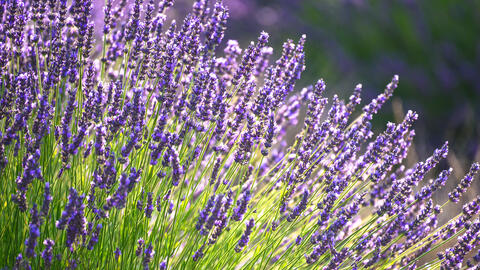The 3 Biggest Mistakes when Caring for Lavender
For Lavender to grow healthily and flower richly, there are a few mistakes you need to avoid when planting and caring for it. What are they? You can find out here!

In the correct location and with the proper care, Lavender will thrive and ensure Mediterranean flair in the garden for many years
You can bring the summer into the garden or onto the balcony with the purple flowers and delicate fragrance of lavender. And although the shrubs are quite undemanding overall, you should watch out for a few little - but important - points when planting and caring for them. If you avoid the following mistakes, you can enjoy luxuriant growing and rich flowering Lavender for many years.
An important care measure is to . If you neglect this point or even allow the semi-shrub to grow for years untouched, you will notice that your plant grows bare from the bottom and ultimately falls apart - this also applies to lavender in a pot. Once it has aged, pruning will do little to rectify this mistake: New shoots will only sprout sparsely from woody branches and the flowerage will also diminish. So correct pruning is essential for vigorous, compact growth and a luxuriant pile. Lightly prune back your lavender consistently after flowering, so towards the end of August, by shortening all the shoots by about one third with the help of a hedge trimmer. As soon as it is warm enough in the spring and no more permafrost is expected, cut back the semi-shrub by about two thirds on hand-height shoots. Always make sure that you leave a little bit of the leaved shoots and do not cut into the wood - lavender does not usually grow shoots again from leafless branches that are a few years old.
There are a few things you can do wrong even when planting Lavender: For example, the Mediterranean plant doesn’t like shady places at all. However, it thrives in warm locations in full sunlight, protected from wind and drafts. The soil must be low in nutrients and very permeable, as lavender has an extremely sensitive reaction to excess moisture. This applies both to the shrubs in your garden as well as those in pots. While dryness is not a problem, they whither in waterlogging - particularly in the winter. A drainage layer in the planting hole or flower pot - which should also have water drainage holes - combats this. If the soil is too wet and has too many nutrients, this can also lead to plants being more sensitive to frost. So, when watering Lavender: Less is more! Only freshly planted specimens should be kept moist during the first days. You should also plant your Lavender in a calciferous, lean soil or a mineral substrate in a pot - normal flower soil is not suitable for this - and make heavy soils more permeable by working in a little sand or gravel. If you notice over time that the location is not 100% suitable, it’s better to replant the Lavender.

If you believe you are doing your Lavender a favor with fertilizer, you are mistaken. Quite the opposite: Too much fertilizer makes the plants grow excessively, i.e. with unnatural luxuriance, and become lazy-flowerers that ultimately lose their stability. So you should avoid giving any fertilizer or compost both to lavender in the garden and to plants on the balcony and patio.


